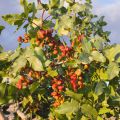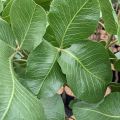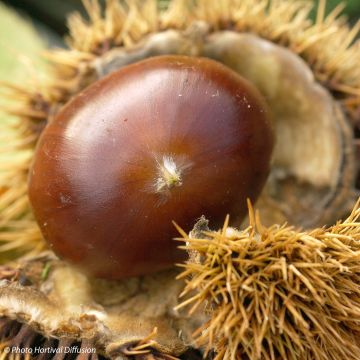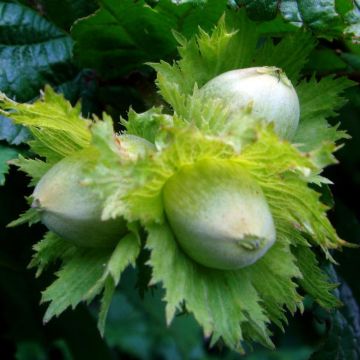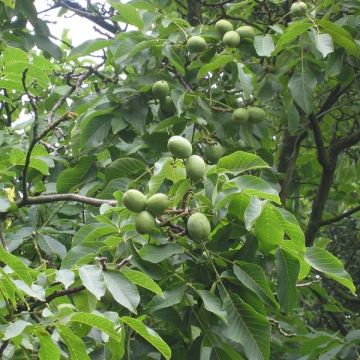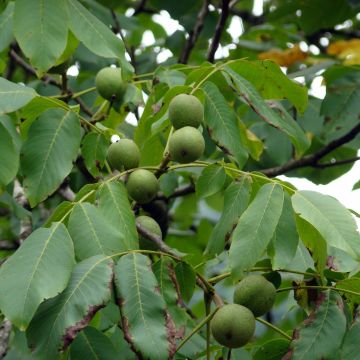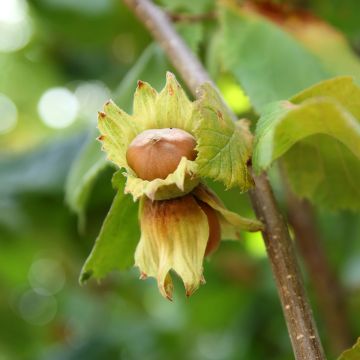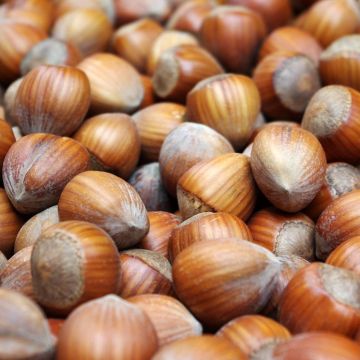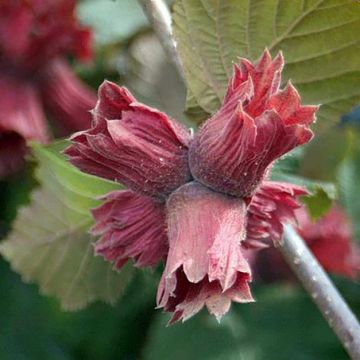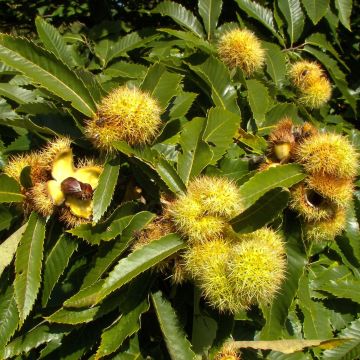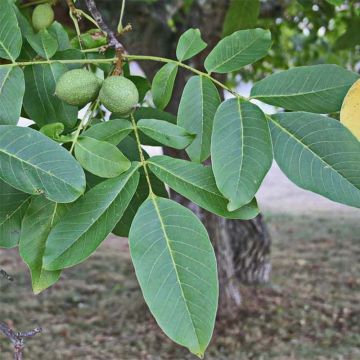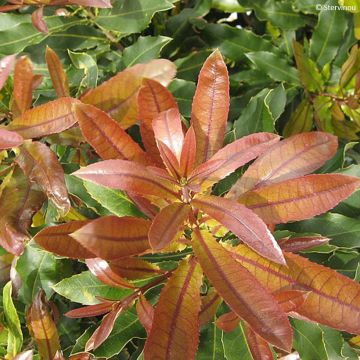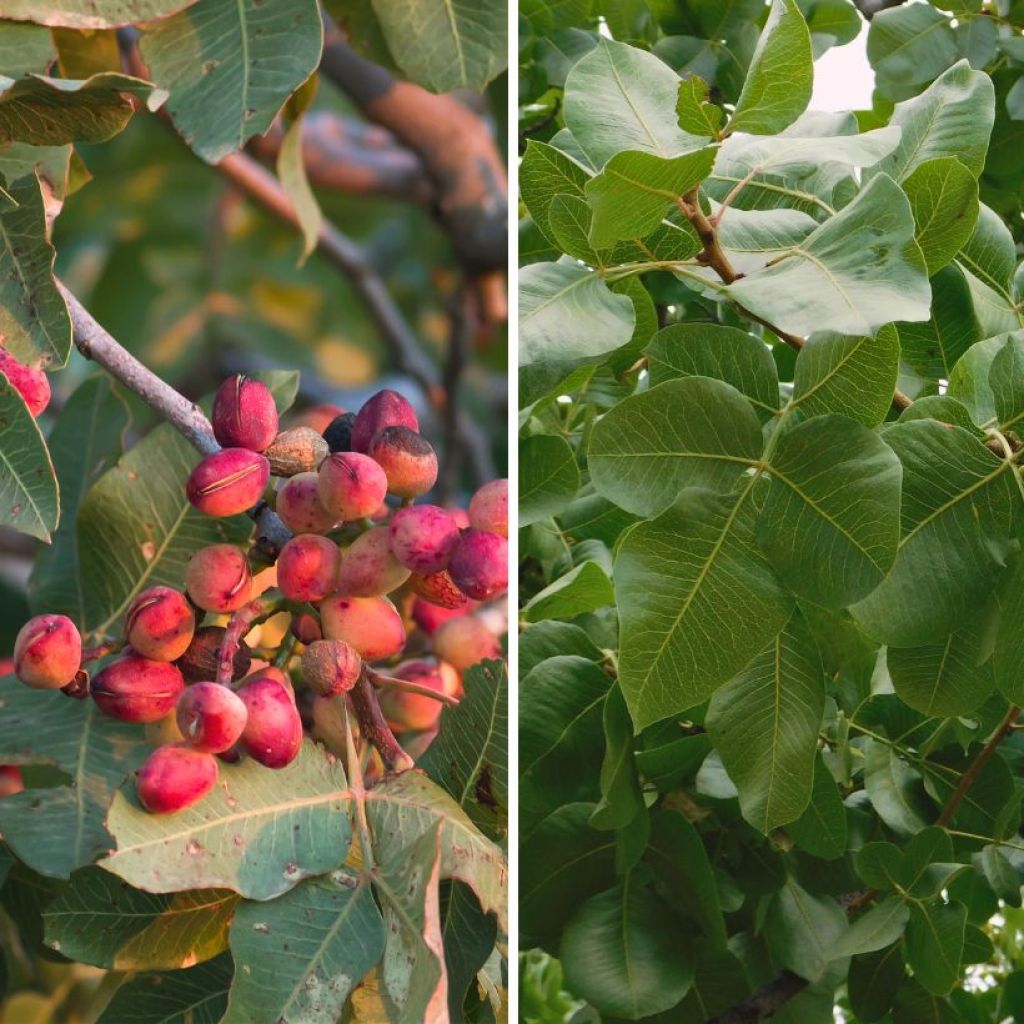

Duo of Pistachio trees - Pistacia vera Kerman (female), Peters (male)
Duo of Pistachio trees - Pistacia vera Kerman (female), Peters (male)
Pistacia vera Kerman, Peters
Pistachio
This plant carries a 6 months recovery warranty
More information
We guarantee the quality of our plants for a full growing cycle, and will replace at our expense any plant that fails to recover under normal climatic and planting conditions.
From €5.90 for pickup delivery and €6.90 for home delivery
Express home delivery from €8.90.
Collection items (2 plants)
Description
This pair of male 'Peters' and female 'Kerman' pistachio trees allows for a bountiful harvest of pistachios in late summer. They should be planted in the garden with the male tree positioned so that the prevailing wind carries its pollen to the flowers of the female tree. The pistachio tree is a small tree with clear requirements for climate and soil: it prefers sandy-loamy, limestone soils that are deep and well-drained, and thrives particularly well in a continental Mediterranean climate where summers are long, dry, and hot, and winters are dry and quite cold. Planting is best done in autumn.
The pair consists of:
- x 1 Female 'Kerman' Pistachio Tree: the most widely cultivated variety of pistachio, prized for its hardiness and productivity. The tree blooms abundantly around mid-April and produces large clusters of round, large fruits that become vibrant when ripe, between late August and September. Beneath the fleshy, aromatic, and highly coloured "skin" lies a large, green, nutritious, and tasty nut, protected by a whitish skin that hardens and opens when ripe. This is what we consume, fresh or roasted, salted or unsalted. The mature tree is hardy down to -15°C, and it blooms around mid-April. The first harvests will be possible on trees aged 5 to 6 years. The harvest can be more or less abundant depending on the year, or sometimes even absent.
- x 1 Male 'Peters' Pistachio Tree: an excellent pollinator for 'Kerman' and several other female varieties. The tree is hardy down to -15°C, heat-resistant (up to 45°C), vigorous, and it blooms quite young, around the age of 4 years. Its flowering, which lasts for 3 weeks between April and May, usually avoids the frost in its cultivation zone and overlaps with that of various female varieties. One tree can pollinate 5 to 8 female pistachio trees.
The true pistachio tree (Pistacia vera) belongs to the Anacardiaceae family, just like Pistacia lentiscus (Mastic Tree) and P. terebinthus, the mango tree and the cashew nut tree. It is a dioecious tree, meaning that there are female trees (like 'Kerman') and male trees (like 'Peters'). Its growth is slow, but it can live for several centuries. Seedling trees do not bear fruit until the age of 8-10 years. Grafting can shorten this period by about 3 years. The most common rootstocks are UCB1, Pistacia terebinthus, and its hybrid with P. lentiscus called P. x saportae.
The pistachio tree is a deciduous tree that can reach a height of 4 to 6 m with a spread of 3 to 5 m. Its habit is slightly weeping in female pistachio trees, but upright in male trees. The leaves are compound, with 3 to 5 (7) broad, fairly dark green leaflets. The flowering occurs before the appearance of leaves, in spring. Male trees have dense clusters of flowers, while female trees have large, slightly loose, and trailing clusters. The abundant pollen is carried by the wind.
For pollination to be successful, it is essential to determine the direction of the prevailing wind when planting pistachio trees. It is also necessary to choose a compatible pollinator that will flower with the female trees. One male tree can pollinate 4 to 7 female trees.
The female 'Kerman' pistachio tree is pollinated by the wind: it is imperative to plant the male 'Kerman' tree facing the prevailing wind, in front of the female tree, so that its pollen is carried to the inflorescences of the latter. Prepare a large planting hole (50 cm in all directions) and space the trees 2 metres apart. The flowering of the pistachio tree is sensitive to frost, as well as to excessive moisture. Rain at the wrong time can compromise pollination. This fruit tree should always be planted in a sunny, well-ventilated, and airy location, never in damp, confined, or dark areas. A well-exposed slope seems ideal.
While not demanding, the female 'Kerman' pistachio tree will be more productive in soil that is not too poor. Adding potassium and magnesium can be beneficial, as well as applying organic fertiliser in late winter. To limit the alternate bearing phenomenon (fruit production every two or three years), it is useful to water the tree in spring, especially if it does not rain.
In favourable climate and soil conditions, this pair of pistachio trees can be planted in an orchard or in a large, free-growing, flowering, and edible hedge. On either side of the two pistachio trees, to avoid hindering pollination, you can plant, for example, the blackthorn, the bird cherry, the wild apple tree, the male cornel 'Jolico', or even strawberry trees.
Report an error about the product description
Plant habit
Fruit
Flowering
Foliage
Botanical data
Pistacia
vera
Kerman, Peters
Anacardiaceae
Pistachio
Cultivar or hybrid
Other Pistachier
Planting and care
Plant pistachio trees during the frost-free period, preferably in autumn.
The fruit-bearing pistachio tree thrives in a Mediterranean climate, with a tendency towards continental or semi-mountain climates: it needs long, hot and dry summers, as well as dry winters that are cold enough to induce flowering. It requires well-drained soil, as its roots are sensitive to fungal diseases. The soil in which it is planted should be deep, loamy-sandy, with a tendency towards limestone. The tree also adapts to more rocky terrain. An adult specimen can withstand brief frosts of -14 to -15 °C in very well-drained soil. Once well established, it can tolerate summer drought. To ensure a good start, care should be taken to plant it in deeply worked soil to allow its roots to descend more quickly, and it should be watered deeply but infrequently, from planting through the first two summers. In areas that are not too cold, it is best to plant it in early autumn, while in areas close to the limit of hardiness, planting in early spring is better. It is advisable to protect young specimens with a winter cover if significant frosts are forecast during the first two winters. This pistachio tree likes limestone, but it also tolerates slightly acidic soils. Staking may be necessary for young plants.
The female pistachio tree is pollinated by the wind: it is imperative to plant the male tree facing the prevailing wind so that its pollen is carried to the inflorescences of the female tree. It should be noted that the flowering of the pistachio tree is sensitive to frost, as well as to excessive humidity. Rain at the wrong time can compromise pollination. This tree should always be planted in a sunny, well-ventilated and airy location, never in damp, confined, dark, low-lying areas. A well-exposed slope seems ideal.
Although it is not very demanding, the female pistachio tree will be more productive in soil that is not too poor. The addition of potash and magnesium can be beneficial, as well as the application of organic fertiliser in late winter. To limit the phenomenon of alternate bearing (fruit production every two or three years), it is useful to water the tree in spring, especially if it does not rain.
Planting period
Intended location
Care
This item has not been reviewed yet - be the first to leave a review about it.
Shell fruit
Haven't found what you were looking for?
Hardiness is the lowest winter temperature a plant can endure without suffering serious damage or even dying. However, hardiness is affected by location (a sheltered area, such as a patio), protection (winter cover) and soil type (hardiness is improved by well-drained soil).

Photo Sharing Terms & Conditions
In order to encourage gardeners to interact and share their experiences, Promesse de fleurs offers various media enabling content to be uploaded onto its Site - in particular via the ‘Photo sharing’ module.
The User agrees to refrain from:
- Posting any content that is illegal, prejudicial, insulting, racist, inciteful to hatred, revisionist, contrary to public decency, that infringes on privacy or on the privacy rights of third parties, in particular the publicity rights of persons and goods, intellectual property rights, or the right to privacy.
- Submitting content on behalf of a third party;
- Impersonate the identity of a third party and/or publish any personal information about a third party;
In general, the User undertakes to refrain from any unethical behaviour.
All Content (in particular text, comments, files, images, photos, videos, creative works, etc.), which may be subject to property or intellectual property rights, image or other private rights, shall remain the property of the User, subject to the limited rights granted by the terms of the licence granted by Promesse de fleurs as stated below. Users are at liberty to publish or not to publish such Content on the Site, notably via the ‘Photo Sharing’ facility, and accept that this Content shall be made public and freely accessible, notably on the Internet.
Users further acknowledge, undertake to have ,and guarantee that they hold all necessary rights and permissions to publish such material on the Site, in particular with regard to the legislation in force pertaining to any privacy, property, intellectual property, image, or contractual rights, or rights of any other nature. By publishing such Content on the Site, Users acknowledge accepting full liability as publishers of the Content within the meaning of the law, and grant Promesse de fleurs, free of charge, an inclusive, worldwide licence for the said Content for the entire duration of its publication, including all reproduction, representation, up/downloading, displaying, performing, transmission, and storage rights.
Users also grant permission for their name to be linked to the Content and accept that this link may not always be made available.
By engaging in posting material, Users consent to their Content becoming automatically accessible on the Internet, in particular on other sites and/or blogs and/or web pages of the Promesse de fleurs site, including in particular social pages and the Promesse de fleurs catalogue.
Users may secure the removal of entrusted content free of charge by issuing a simple request via our contact form.
The flowering period indicated on our website applies to countries and regions located in USDA zone 8 (France, the United Kingdom, Ireland, the Netherlands, etc.)
It will vary according to where you live:
- In zones 9 to 10 (Italy, Spain, Greece, etc.), flowering will occur about 2 to 4 weeks earlier.
- In zones 6 to 7 (Germany, Poland, Slovenia, and lower mountainous regions), flowering will be delayed by 2 to 3 weeks.
- In zone 5 (Central Europe, Scandinavia), blooming will be delayed by 3 to 5 weeks.
In temperate climates, pruning of spring-flowering shrubs (forsythia, spireas, etc.) should be done just after flowering.
Pruning of summer-flowering shrubs (Indian Lilac, Perovskia, etc.) can be done in winter or spring.
In cold regions as well as with frost-sensitive plants, avoid pruning too early when severe frosts may still occur.
The planting period indicated on our website applies to countries and regions located in USDA zone 8 (France, United Kingdom, Ireland, Netherlands).
It will vary according to where you live:
- In Mediterranean zones (Marseille, Madrid, Milan, etc.), autumn and winter are the best planting periods.
- In continental zones (Strasbourg, Munich, Vienna, etc.), delay planting by 2 to 3 weeks in spring and bring it forward by 2 to 4 weeks in autumn.
- In mountainous regions (the Alps, Pyrenees, Carpathians, etc.), it is best to plant in late spring (May-June) or late summer (August-September).
The harvesting period indicated on our website applies to countries and regions in USDA zone 8 (France, England, Ireland, the Netherlands).
In colder areas (Scandinavia, Poland, Austria...) fruit and vegetable harvests are likely to be delayed by 3-4 weeks.
In warmer areas (Italy, Spain, Greece, etc.), harvesting will probably take place earlier, depending on weather conditions.
The sowing periods indicated on our website apply to countries and regions within USDA Zone 8 (France, UK, Ireland, Netherlands).
In colder areas (Scandinavia, Poland, Austria...), delay any outdoor sowing by 3-4 weeks, or sow under glass.
In warmer climes (Italy, Spain, Greece, etc.), bring outdoor sowing forward by a few weeks.

































